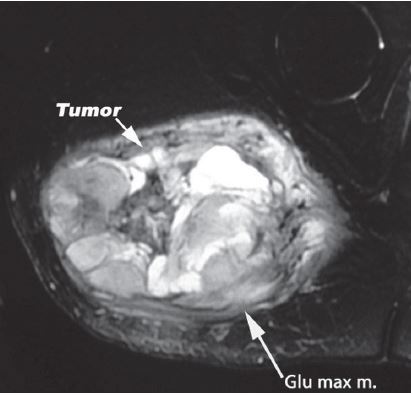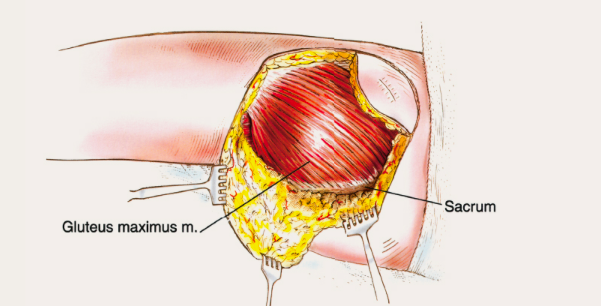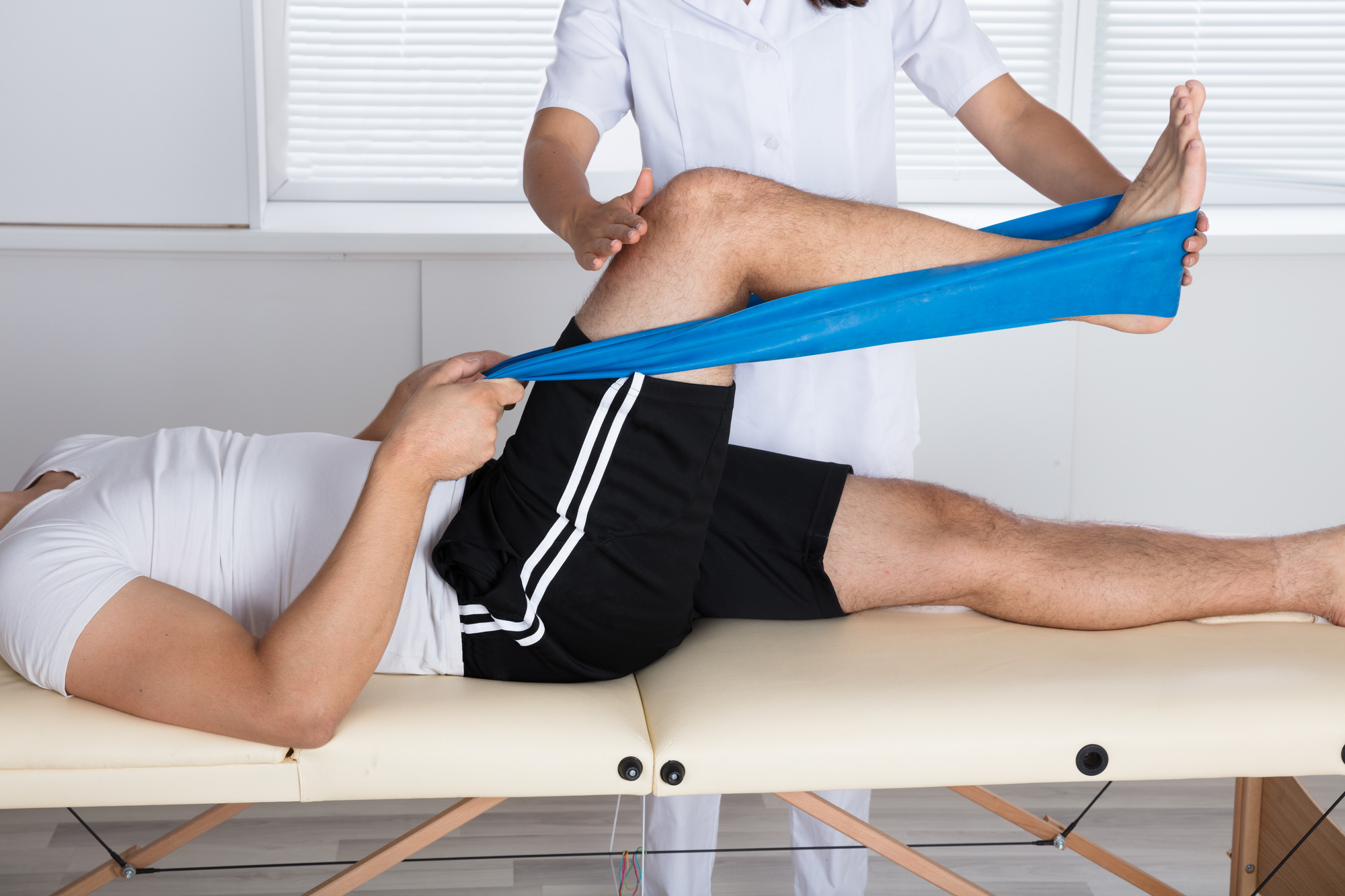Buttockectomy
It is a procedure that involves removing a tumor of the gluteus maximus, also known as the buttock. This is done while preserving the surrounding bone and soft tissues.

It is a procedure that involves removing a tumor of the gluteus maximus, also known as the buttock. This is done while preserving the surrounding bone and soft tissues.

The gluteus maximus (buttock) is a common site for high-and low-grade soft tissue sarcomas confined to the gluteus maximus. The gluteus maximus is a “quiet area”, meaning symptoms typically do not show until the mass becomes extremely large. Traditionally, low- and high-grade soft tissue sarcomas of the buttock were treated with a posterior cutaneous flap hemipelvectomy (amputation). Advances in limb-sparing surgical procedures have permitted resections with safe margins in most sarcomas and have reduced the need for hemipelvectomy for tumors in this region. About 90% of soft tissue sarcomas arising in the buttock can be resected and treated adequately by a limb-sparing surgery.
Contraindications for saving the limb may include neurovascular invasion, infection, pathological fracture, invasion of the pelvis, extensive disease, contamination from a poorly performed biopsy, recurrent disease.


A large posterior lateral incision is made that allows access to your sciatic nerve and the blood vessels and nerves to the gluteus maximus and for dissection of the gluteus maximus.

Developing surgical planes (margins that are tumor free) and separating muscles such as the gluteus maximus and leaving those in continuity with the tumor that should be removed. This is based on preoperative MRI and intra-operative findings as well as the type of tumor.

The sciatic nerve is initially found by the surgeon to ensure that the tumor is separated from the nerve and protected. The vessels that are attached to the tumor such as the ones beneath the gluteus maximus are ligated (closed off).


The piriformis and quadratus femoris muscle are commonly used to restore this “dead space” and provide protection of the sciatic nerve.

We then close your incision with sutures and cover the surgical site with bandages. Multiple large drains may also be used to drain the surgical site and prevent a seroma (buildup of fluid).

On this MRI, the tumor can be identified as the brightened portion on the left hand side of the image. Although it is the left side of the image, it is actually on the right side of the human.

Here the patient is seen with the larger circle being the site of the incision being made, and the line inside the circle marking where the tumor is located.

Here the buttock has been opened and the skin retracted from the muscle.

This is an image of the tumor removed from the buttock region in its totality.
After your surgery you will spend a few nights in the hospital and then will be recuperating at home. Various pain protocols and nerve blocks are used to minimize pain. Mostly all patients are very comfortable after the surgery. For the first few days you will ice the area and keep it elevated to reduce swelling. You will return to the office 2 weeks after surgery. Once cleared, you will subsequently start physical therapy. We usually prescribe specific physical therapy protocols 3 times a week for 12 weeks after surgery to gradually strengthen muscles. Strengthening with significant resistance after sufficient range of motion is achieved as determined by Dr. Wittig. There may be an ultimate weight limit imposed upon you depending on various factors.
You will be monitored periodically with MRI imaging over the course of 5 years to ensure there are no signs of recurrence. You will have follow up appointments every 4 months for the first 2 years, then every 6 months for the next 2 years, and then once a year. Since the integrity of the limb has been restored to full or almost full, recovery is anticipated provided the patient adheres to strict physical therapy.

Dr. James Wittig narrates a video illustrating the surgical technique for a buttockectomy. | WATCH VIDEO